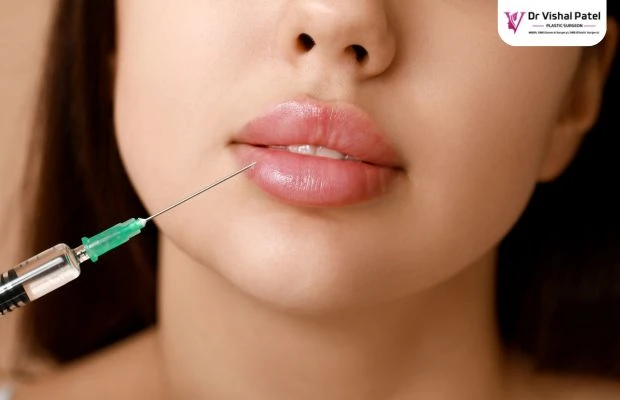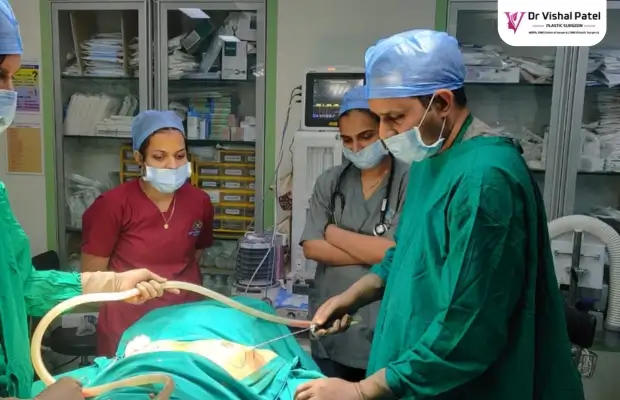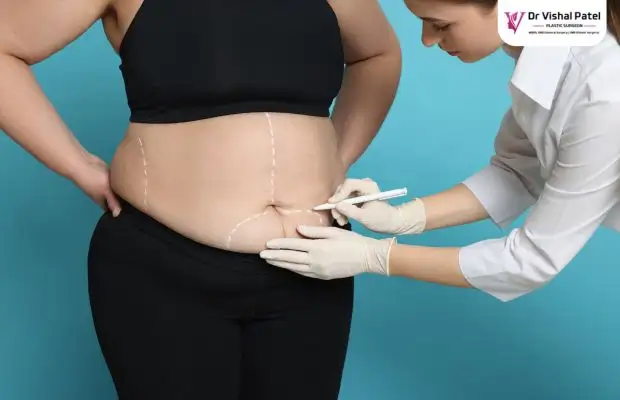
Buccal fat removal or cheek fat reduction is a popular face plastic surgery in Mumbai. This surgery is done for reducing the face fat (actually the cheeks fat) and thereby achieve a slimmer cheeks.
The buccal fat removal cost in India is already lower than other foreign cities like Los angeles, Sydney and countries like Cancada.
The demand for body contouring procedures are increasing day by day due to affordable buccal fat removal cost in India. Earlier, there was a trend of buccal fat removal done by celebrities only.
But now, more people including both men and women are looking for fat free face.
In this post, we will focus on buccal fat removal cost in India & also buccal fat removal cost in Mumbai and other major Indian cities. So, let’s get started.
What is Buccal Fat Removal ?
Buccal fat removal is a face plastic surgery procedure. It involves the surgical removal of the buccal fat pad. The buccal fat pad is a natural fat deposit located in the lower cheeks area. The buccal fat surgery is good for people who have a round shaped cheeks due to fat accumulation in lower cheeks area.
The buccal fat surgery in India targets the buccal fat pad anatomy so as to get a slimmer look.
Your face plastic surgeon in Mumbai is fully aware of the internal of cheeks anatomy and the buccal fat pad anatomy.
Using latest fat reduction techniques, the plastic surgeon will give you a slimmer look.
This face plastic surgery in Mumbai is very popular among celebrities for achieving a sharp jawline.
What is Buccal Fat Surgery?

Buccal fat surgery in Mumbai is done to get rid of face fat or cheek fat. Hence, it’s also called as cheek reduction surgery in India.
It is minimally invasive plastic surgery. In this, your face plastic surgeon in Mumbai will do a small incision inside the mouth.
The fat is removed by ensuring there are no visible scars.
Benefits of Buccal fat removal in Mumbai are many. This includes face fat reduction, cheeks fat reduction, getting slimmer cheeks & face.
It also help reduce appearance of chubby cheeks face.
Buccal Fat Removal Cost in India

Buccal fat removal in India is available in all major Indian cities. This includes Pune, Mumbai, Delhi, Hyderabad & Bangalore.
More and more people are looking for face slimming due to affordable cost of buccal fat removal operation. There are various factors that affect the cost. Usually, the cost of buccal fat removal varies as per the city.
Below we mention cost of buccal fat removal in various Indian cities –
Buccal Fat Removal Cost in Mumbai India
Mumbai is the hub for cosmetic surgeries and it offers a range of plastic surgery clinics which provide affordable buccal fat removal operation.
Cost in INR: ₹40,000 to ₹1,20,000
Cost in USD: $500 to $1,450
Buccal Fat Removal Cost in Delhi India
Cost in INR: ₹45,000 to ₹1,10,000
Cost in USD: $550 to $1,330
Buccal Fat Removal Cost in Hyderabad India
Cost in INR: ₹40,000 to ₹90,000
Cost in USD: $480 to $1,080
Buccal Fat Removal Cost in Hyderabad India
Cost in INR: ₹40,000 to ₹80,000
Cost in USD: $480 to $970
Average Buccal Fat Removal Cost across India
Cost in INR: ₹40,000 to ₹1,20,000
Cost in USD: $480 to $1,450
Factors affecting Buccal Fat Removal Cost in India
Plastic Surgeon’s Experience: Renowned surgeons may charge more for their expertise.
Technology Used: Some clinics uses advanced techniques like cheek liposuction in Mumbai for buccal fat removal in India. The buccal fat removal machines, and the technology thus increases the overall cost of buccal fat pad removal in India. Advanced liposuction techniques like U Lipo treatment in Mumbai exist that helps in fat reduction without a surgery. U Lipo treatment cost in Mumbai varies as per body area being treated and the degree of liposuction required.
Pre- and Post-Surgery Care: Some plastic surgery clinics include follow-up visits, medications, and care plans in their packages.
If you do buccal fat removal as a part of full body liposuction, then you will save a lot as cost of full body liposuction in Mumbai is lower than doing lipo in individual areas one by one. U Lipo treatment is also another option as suggested above.
Other Minor Costs Involved in Buccal Fat Removal in India
- Consultation Fee: ₹1,000 to ₹3,000 ($12 to $36)
- Post-Surgery Medications: ₹5,000 to ₹10,000 ($60 to $120)
- Anesthesia Charges: ₹5,000 to ₹10,000
FAQs on Buccal Fat Removal Cost in India
Does buccal fat grow back?
No, once removed, buccal fat does not grow back. However, significant weight gain may lead to overall fat accumulation in the face.
How much does it cost to remove buccal fat?
In India, the cost ranges from ₹30,000 to ₹70,000, depending on the city and surgeon.
How much does it cost to slim face?
Face slimming surgery costs vary between ₹40,000 and ₹80,000 in India.
Is buccal fat removal a good idea?
It’s a good option for individuals with round or chubby faces who want a more sculpted look. Consulting with an experienced surgeon is crucial to ensure suitability.
How to get a jawline female surgery?
Jawline contouring surgery can help enhance the jawline for women. The cost starts at ₹60,000 in India.
How much does face fat transfer cost in India?
Face fat transfer typically costs between ₹50,000 and ₹1,00,000, depending on the complexity.
Get Minimum 10% Off on Buccal Fat Removal Cost in India
Get minimum 10% Off on consultation and surgery fees with Dr. Vishal Patel – A Board Certified Plastic Surgeon in Mumbai.
Book your appointment now!.
Step 1
Fill the form
Step 2
Fix Your Time Slot
Step 3
Mention about offer at Reception
How to get discount on Buccal Fat Removal Cost in India?
If you want to undergo buccal fat pad removal in Mumbai India then Recon plastic surgery clinic by Dr Vishal Patel in Malad & Goregaon Mumbai offers 10% off seasonal discounts.
Conclusion on Buccal Fat Removal Cost in India
Buccal fat removal surgery in India is a safe way to achieve a slimmer face & slimmer cheeks.
The lowest and affordable buccal fat pad removal cost in India is available in Mumbai and Pune.
Dr. Vishal Patel - Best Plastic Surgeon in Mumbai
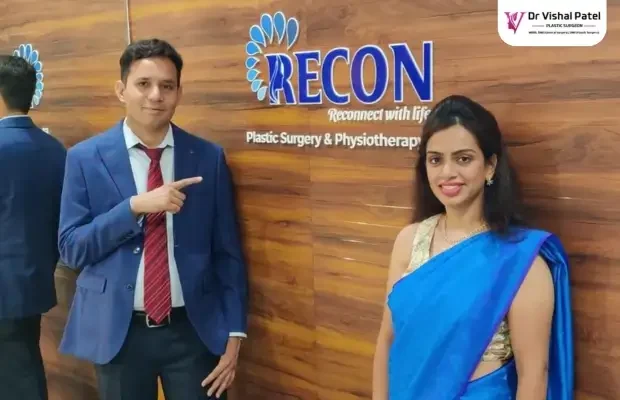
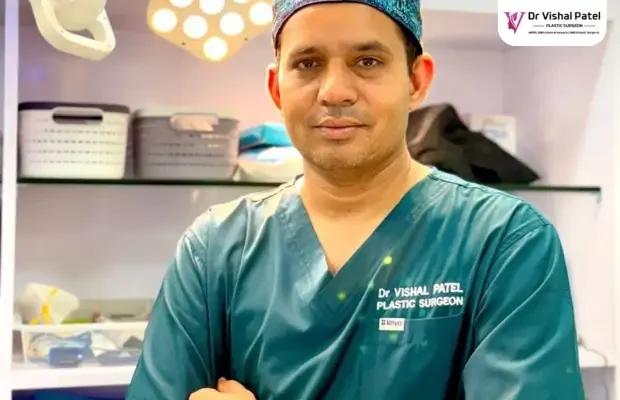
Dr. Vishal Patel is widely recognized as the best plastic surgeon in Mumbai, with over a 11+ years of experience in cosmetic and reconstructive surgery. Known for his expertise, compassionate care, and exceptional results,
Dr. Patel has helped 10000+ patients achieve their aesthetic goals and regain their confidence with successful plastic surgeries in Mumbai. Dr. Patel specializes in a wide range of advanced plastic surgery procedures, including:
Breast Augmentation in Mumbai
Mommy Makeover in Mumbai
He is a founder of Recon Plastic Surgery Clinic in Mumbai near Malad West.
Visit Us for Best Buccal Fat Removal in Mumbai
Recon Plastic Surgery & Physiotherapy Clinic,
302, Corporate Corner, Next to Dalmia College, Mandlik Nagar, Sunder Nagar, Malad West, Mumbai, Maharashtra 400064

